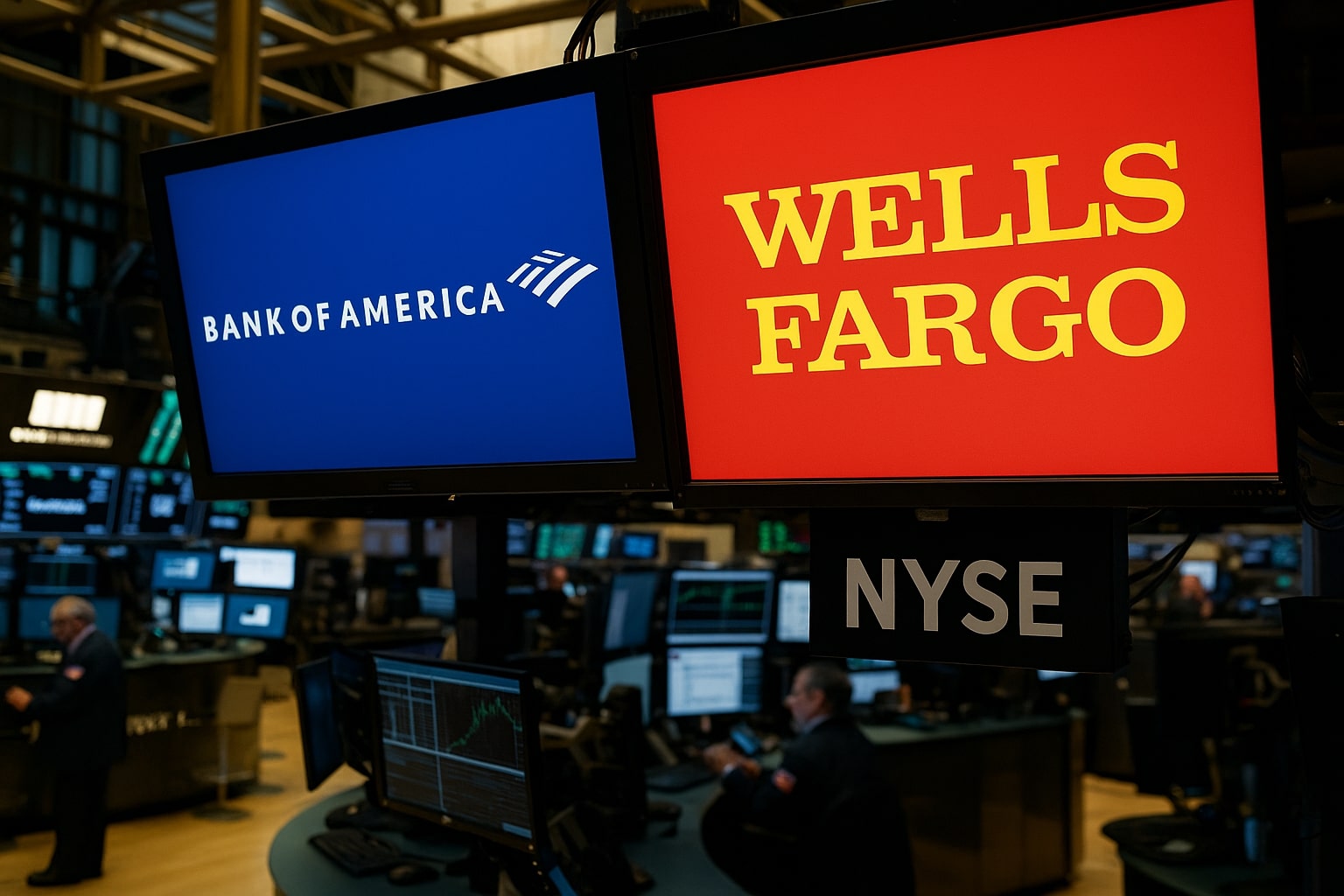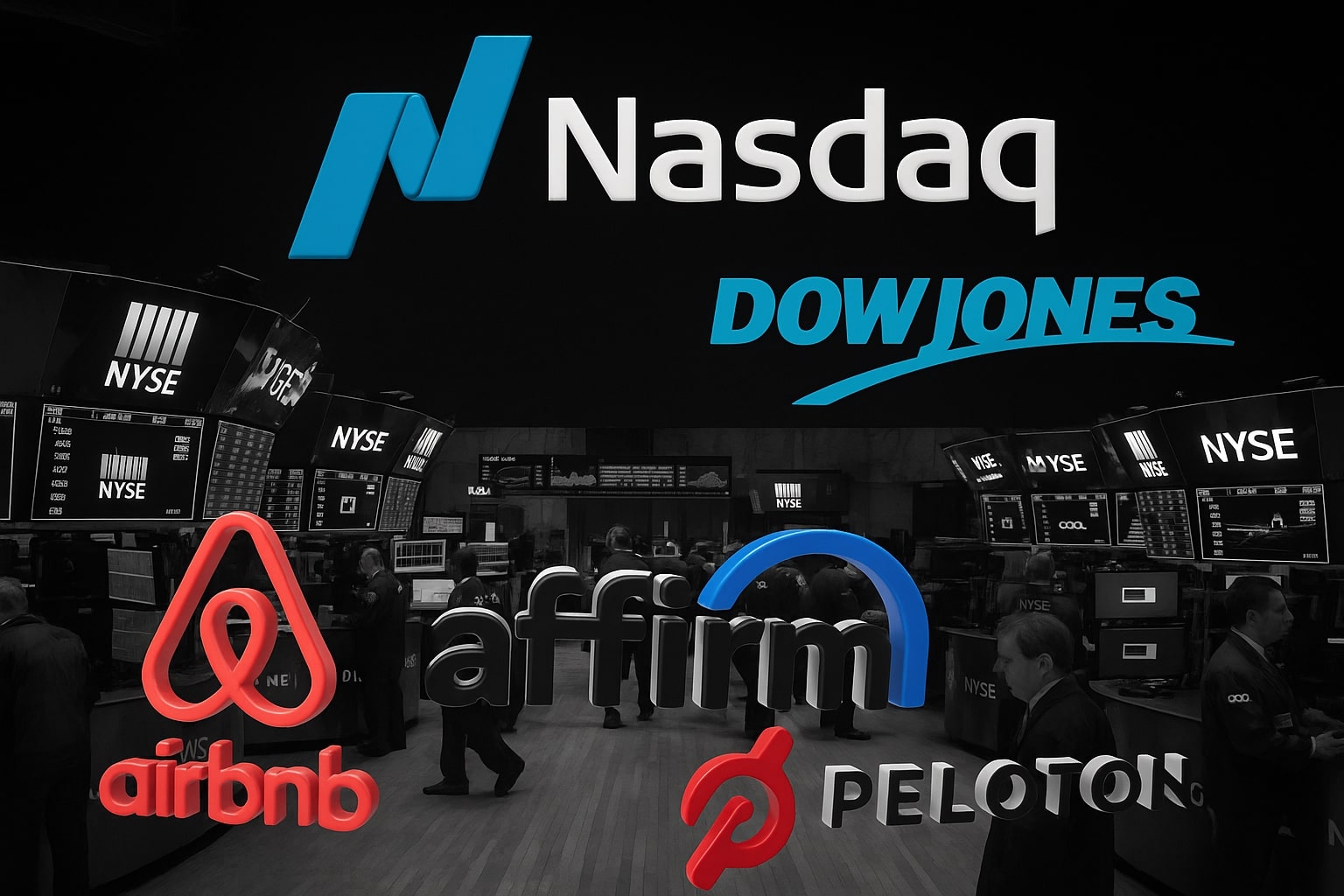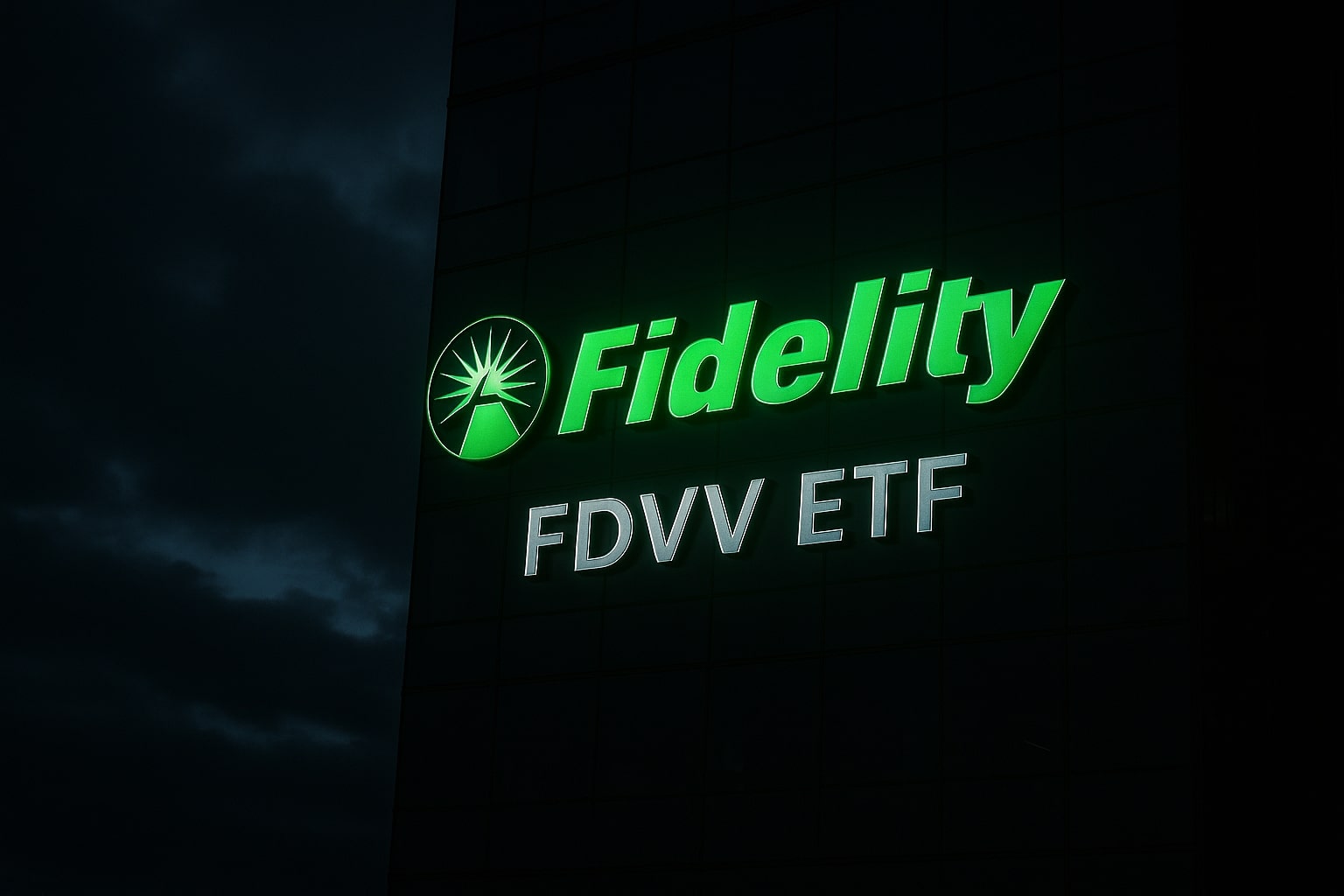
Bank of America Stock at $52.13 vs Wells Fargo Stock at $83.09: Which Bank Has More Upside?
BAC stock rose 133% in five years with $2T deposits and 11 years of dividend growth. WFC stock surged 270%, beating EPS forecasts. Which stock delivers more value? | That's TradingNEWS
NYSE:BAC Stock vs NYSE:WFC Stock Price Performance and Market Value
Bank of America (NYSE:BAC) stock is trading at $52.13, marking a 1.41% daily gain and brushing against its 52-week high of $52.14, a sharp rebound from its low of $33.07. Over the past twelve months, BAC stock has climbed 34.7%, nearly doubling the S&P 500’s 18.1% one-year return. The five-year return of 133.6% reinforces its role as a steady compounder, while its market cap of $386.2B confirms it as the second-largest U.S. bank behind JPMorgan. Meanwhile, Wells Fargo (NYSE:WFC) stock trades at $83.09, with a one-day move of +0.74%, also pressing against a record high of $84.83. WFC has delivered a 56.5% one-year gain, dwarfing BAC’s 34.7%, and an extraordinary 270.7% five-year rally, more than double BAC’s 133.6%. Its $266.1B market cap makes it smaller in size but more powerful in stock performance. BAC real-time chart and WFC real-time chart show the full trajectory.
Earnings Trends and EPS Outlook for Both Bank Stocks
BAC stock produced $0.89 EPS in Q2 2025, up 7% YoY, supported by net income of $7.1B, a 3% increase YoY. Analysts project full-year 2025 EPS of $3.67 and $4.26 EPS in 2026, implying 16% growth next year. WFC stock has delivered stronger momentum: $1.60 EPS in Q2 2025 beat analyst expectations by 13.6%, marking its fourth straight beat. Forecasts point to $6.06 EPS in 2025 and $6.70–6.71 in 2026, representing double-digit growth that is more predictable given WFC’s cost-cutting progress. While BAC offers resilience and steady improvement, WFC’s consistent outperformance against estimates gives it a superior near-term earnings profile.
Revenue Structure and Growth Dynamics in BAC Stock vs WFC Stock
Bank of America generated $98.5B in trailing twelve-month revenue, growing 4.2% YoY. Consumer Banking contributed $21.3B net revenue in H1 2025, with credit and debit card purchase volumes climbing to $183.0B and $289.5B respectively. Card income rose to $3.16B in H1, signaling steady demand even as deposits in this unit slipped to $945.6B. Wealth and Investment Management reported $4.40T client balances, with $2.0T in AUM, up 13% YoY, and positive net flows of $14B in the latest quarter. Global Markets revenue surged to $12.6B in H1 2025, up from $11.3B, supported by +16% FICC trading and +10% equities trading. By contrast, WFC stock reflects a $77.6B revenue base, but its non-interest income is a differentiator: advisory and brokerage commissions grew strongly, alongside $462M venture capital gains and $147M debt securities income. These one-off boosts add volatility to WFC’s revenue profile compared to BAC’s broader diversification.
Profitability and Return Ratios: BAC Stock vs WFC Stock
BAC stock maintains a 28.5% net margin, 9.5% ROE, and 0.84% ROA. These numbers highlight stability but also reveal underperformance relative to peers such as JPMorgan or Wells Fargo. WFC stock posts 26.5% net margins with 11.5% ROE, comfortably ahead of BAC’s 9.5%. Return on tangible equity also favors WFC, highlighting its stronger profitability despite having a smaller balance sheet. BAC has improved efficiency through digital banking—digital users rose to 49M, with mobile banking users at 40.8M—but return metrics remain below top-tier rivals.
Valuation Premiums and Market Sentiment Toward BAC Stock and WFC Stock
BAC trades at 15.1x trailing P/E, 12.1x forward P/E, and 1.38x price-to-book, moderately above the banking sector’s historical norms. WFC stock trades at 14.3x trailing P/E and 12.2x forward P/E, but with a steeper 1.61x price-to-book ratio, compared to its five-year average of 1.08x. This reflects the market’s willingness to pay a premium for WFC’s stock momentum and stronger EPS beats. Consensus targets for BAC average $53.69, with upside toward $60, while WFC stock holds a consensus target of $87, with a potential high of $95. Analysts view BAC as a resilient compounder and WFC as a growth-driven momentum play.
Capital Strength and Dividend Growth in Both Bank Stocks
BAC’s liquidity strength is undeniable, with $838.1B in cash against $819.3B debt, and a CET1 ratio of 11.5%, signaling strong capital buffers. WFC’s CET1 ratio sits at 11.1%, with a liquidity coverage ratio of 121%, but operating cash flow at –$9.14B ttm shows balance sheet volatility. BAC pays an annual dividend of $1.12 per share, yielding 2.18%, backed by a low 30.5% payout ratio and a streak of 11 consecutive annual increases. WFC pays $1.80 per share annually, also yielding 2.18%, with a payout ratio of 27.5%. WFC has raised its dividend from $1.60 to $1.80 over the past year, but BAC’s longer history of dividend growth makes its stock more attractive for long-term income portfolios. BAC stock profile and WFC stock profile provide dividend and insider data.
Read More
-
Stock Market Today - Nasdaq Sinks 4% Weekly as AI Stocks Crumble and U.S. Shutdown Deepens
07.11.2025 · TradingNEWS ArchiveStocks
-
Bitcoin Price Forecast - BTC-USD Slides Below $100K as Bitcoin ETF Inflows Rebound
07.11.2025 · TradingNEWS ArchiveCrypto
-
Gold Price Forecast - XAU/USD Steadies Near $3,998 as China and Fed Policies Ignite Bullish Momentum
07.11.2025 · TradingNEWS ArchiveCommodities
-
USD/JPY Price Forecast - Yen Consolidates Around 153.60 as Range Breakout Setup Drive Market Focus
06.11.2025 · TradingNEWS ArchiveForex
Technical Analysis and Market Positioning of BAC Stock vs WFC Stock
BAC stock trades comfortably above its 50-day moving average ($48.26) and 200-day moving average ($44.91), with support near $50.00 and resistance between $53.50–54.00. Short interest stands at 97.9M shares, or 1.32% of float, with a short ratio of 2.84, reflecting cautious hedging but no structural bearish pressure. WFC stock trades above its $80.49 support, with resistance at $87.32, and short interest of 1.45% of float, or 46.2M shares, showing slightly higher hedge activity than BAC. Options markets show BAC with steady institutional positioning, while WFC displays more speculative interest, underlining its stock’s higher volatility profile.
Institutional and Insider Ownership
Institutions own 67.3% of BAC stock, with insiders holding a notable 8.3%, creating better alignment between management and shareholders. WFC stock is more institutionally dominated, with 78.9% ownership, but insiders hold only 0.09%, signaling lower personal stake from leadership. BAC’s insider ownership gives investors more confidence in governance alignment, while WFC benefits from stronger institutional sponsorship.
Overall Stock Investment Outlook: BAC vs WFC
Both BAC stock and WFC stock stand near record highs, but their investment profiles differ sharply. BAC offers defensive stability, massive scale with $2.0T deposits and $4.4T client balances, and consistent dividend growth. Its valuation is premium, but not stretched relative to peers, leaving room for modest upside toward $60. WFC stock, trading at $83.09, reflects stronger momentum and higher returns on equity, with forecasts pointing to continued EPS beats. The premium 1.61x P/B shows investors are already paying for that growth, yet the stock still has upside toward $87–95 if momentum continues. For conservative investors seeking resilience and dividends, BAC remains the steadier stock. For those prioritizing higher growth, momentum, and stronger ROE, WFC stock looks better positioned to capture further upside.


















